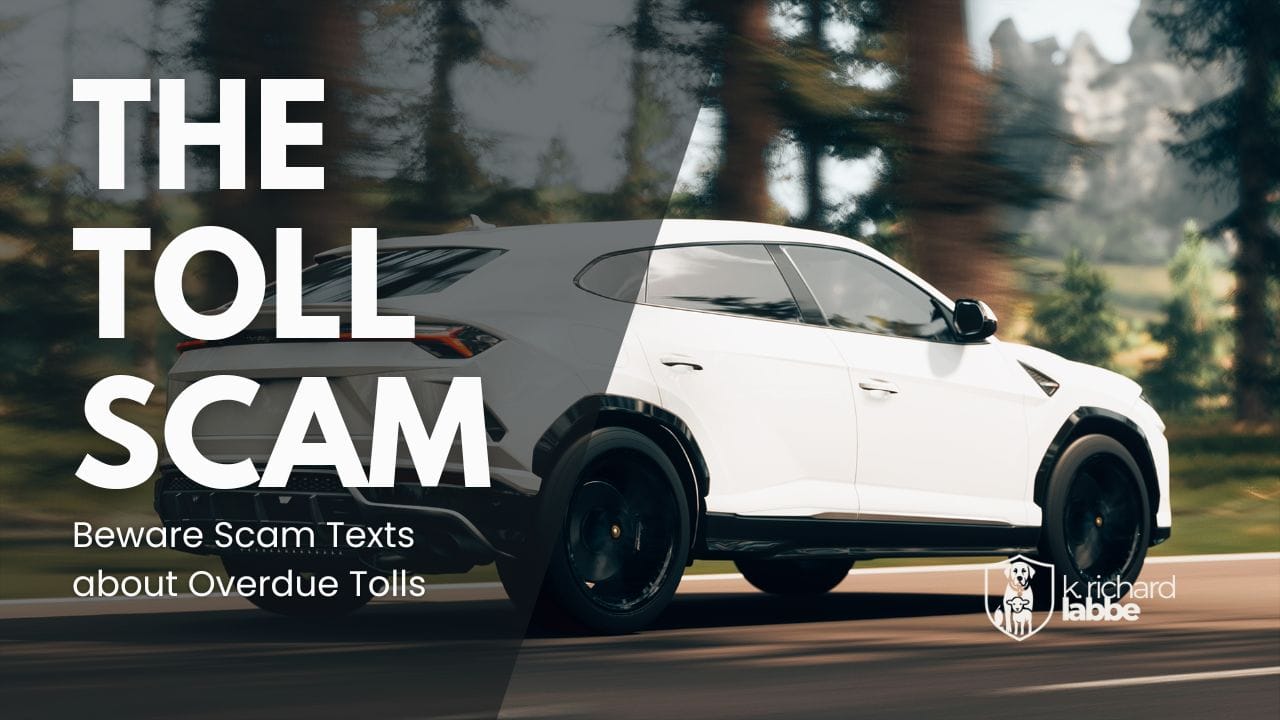The Toll Scam: Why That Text About an Unpaid Toll Might Be a Trap
What to Know, What to Do, and How to Protect Yourself

You’re driving home when your phone buzzes.
It’s a text from a number you don’t recognize — supposedly from your state’s toll authority. It says you have unpaid tolls, and if you don’t pay soon, late fees will apply. There’s a link to settle up quickly online.
It seems official. It even uses your state’s name or abbreviation. But here’s the problem: it’s probably a scam.
How the Toll Scam Works
This scam is spreading fast — and it’s convincing.
Scammers send out mass texts that claim to come from agencies like:
- “PA Turnpike Toll Services”
- “NY E-ZPass Violation Department”
- “Texas Toll Operations Center”
The message typically reads something like:
You have unpaid tolls. Pay now to avoid additional fees. [Click Here]
The link looks official — but it’s fake. Clicking it may:
- Install malware on your device
- Steal your credit card or banking information
- Trick you into entering personal data like your address or license plate
Why It Works
This scam works because it feels just believable enough:
- Many people do drive toll roads and may not track every charge
- The message feels urgent: “Pay now or face a penalty”
- The link looks like it belongs to a real government site
- The scam targets a routine, forgettable part of modern life
And let’s face it — in a busy week, who doesn’t second-guess whether they missed something?
What You Should Do
If you get a message like this:
- Don’t click the link.
Even if it looks official, resist the urge to “check quickly.” - Go directly to the source.
If you use toll services (like E-ZPass), visit the agency’s official website by typing it in manually. You can log in and see if anything is actually owed. - Watch for red flags.
- Unknown sender or strange URL
- Poor grammar or odd capitalization
- Requests for credit card info via text
- Report the scam.
Forward the text to 7726 (which spells SPAM) to report it to your phone carrier. You can also report it to your state’s toll authority and to the FTC at ReportFraud.ftc.gov.
How to Help Others
Many older adults or non-tech-savvy drivers are especially vulnerable to this scam. A short, friendly conversation might go a long way.
You could say:
“Hey — just a heads up. There’s a scam going around that looks like a toll bill. If you get one, don’t click. Always go to the actual site instead.”
That one heads-up might save someone from identity theft or a drained bank account.
Final Thought
Not every threat comes with flashing warnings. Some come dressed as normal — as a routine bill, a helpful reminder, a text on a Tuesday.
Scammers are counting on you to react quickly and unquestioningly.
So take a breath. Slow down. Think twice before clicking.
And remember: real agencies don’t collect payments by text message.
Trust the still, small voice of wisdom — not the loud voice of urgency.
Stay safe. Be ready. Online and off.
Every effort has been made to ensure the accuracy and reliability of the information presented here. While Labbe Media, LLC strives to offer clear, well-researched guidance, this content is intended for educational purposes only and isn’t a substitute for professional advice tailored to your situation. We encourage you to use this material as a starting point—and to double-check details and consult trusted professionals when making important decisions.
